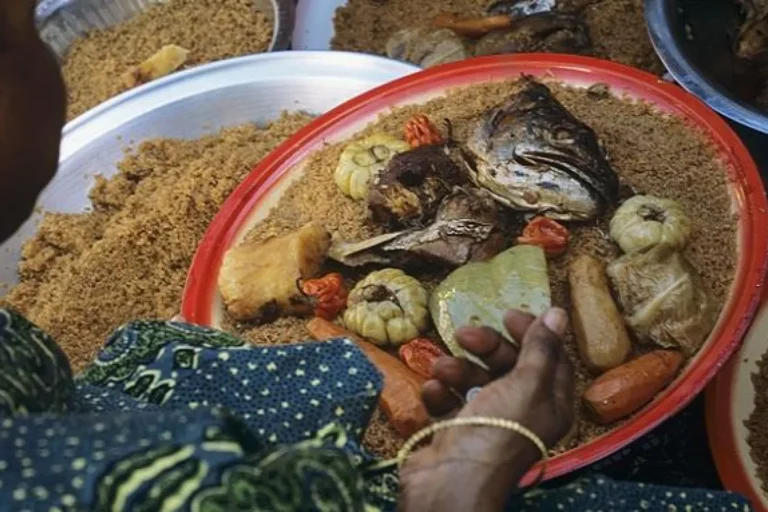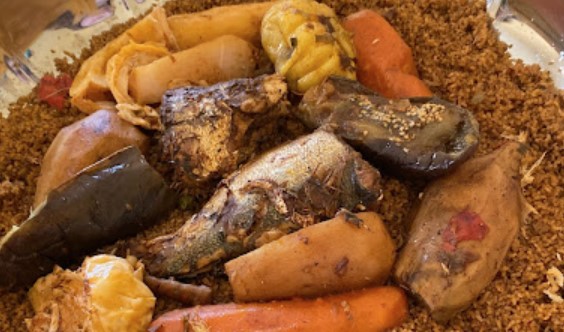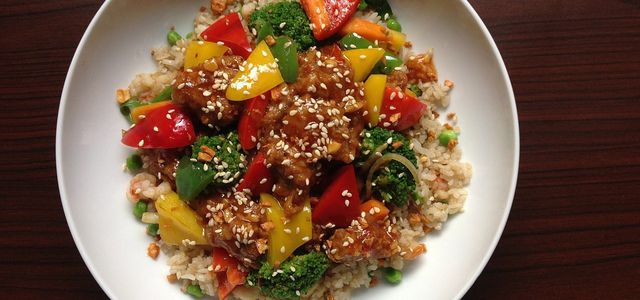Introduction: Getting to know Senegalese cuisine
Senegalese cuisine is a fusion of various cultures, including African, Arabic, and French. The country’s cuisine is known for its bold flavors, exotic spices, and aromatic herbs. Senegal’s national dish is Thieboudienne, a flavorful fish and rice dish that is popular across the country. In this article, we will be discussing some of the regional specialties of Senegalese cuisine.
Northern Senegalese specialties: Thieboudienne and Yassa Poulet
Thieboudienne is a classic Senegalese dish that originated in the northern part of the country. It is a combination of fish and rice, cooked with vegetables and spices, such as tomatoes, onions, and cassava leaves. This dish is traditionally served with a flavorful sauce made from tamarind, peppers, and other spices.
Another popular northern Senegalese dish is Yassa Poulet, which is a chicken dish cooked with onions and lemon juice. The chicken is marinated in a mixture of onions, lemon juice, mustard, and other spices, and then grilled or sautéed until it is tender and juicy. Yassa Poulet is usually served with rice or couscous and can be found in many restaurants across the country.
Central Senegalese specialties: Mafé and Thiou
Mafé is a popular dish in central Senegal, which is essentially a peanut stew. It is usually made with chicken or beef, vegetables, and a rich peanut sauce. The peanut sauce is what gives it its distinctive flavor and is made from peanuts, tomatoes, onions, and other spices. Mafé is usually served with rice or couscous and is a must-try dish when visiting central Senegal.
Another popular dish in central Senegal is Thiou, which is a vegetable stew made with beef or lamb. The vegetables used in the stew vary depending on the season and include okra, eggplant, squash, and other vegetables. The stew is usually served with rice and is full of delicious flavors.
Southern Senegalese specialties: Domoda and Pastels
Domoda is a popular dish in southern Senegal, which is essentially a peanut butter stew made with beef or lamb. The stew is usually served with rice and is rich in flavor. It is a must-try dish when visiting southern Senegal.
Another popular dish in southern Senegal is Pastels, which are essentially turnovers filled with various ingredients such as fish, beef, chicken, or vegetables. They are usually fried and are a popular snack in Senegal.
Drinks and Desserts: Bissap and Thiakry
Bissap is a popular drink in Senegal, which is made from hibiscus flowers. The drink is usually sweetened with sugar and is served chilled. It is a refreshing drink and is perfect to cool down on a hot day.
Thiakry is a popular dessert in Senegal, which is made from millet, yogurt, and sugar. The mixture is left to ferment overnight, giving it a tangy flavor. It is usually served cold and is a delicious dessert to end a meal.
Where to try Senegalese cuisine in Senegal and abroad
Senegalese cuisine can be found in many restaurants across the country, especially in the capital city of Dakar. Some popular restaurants to try include Chez Loutcha, Le Récife, and La Calebasse.
If you are abroad, you can also try Senegalese cuisine in many cities around the world, including Paris, London, and New York. Some popular Senegalese restaurants include Le Baobab, Africa Kine, and Teranga.






